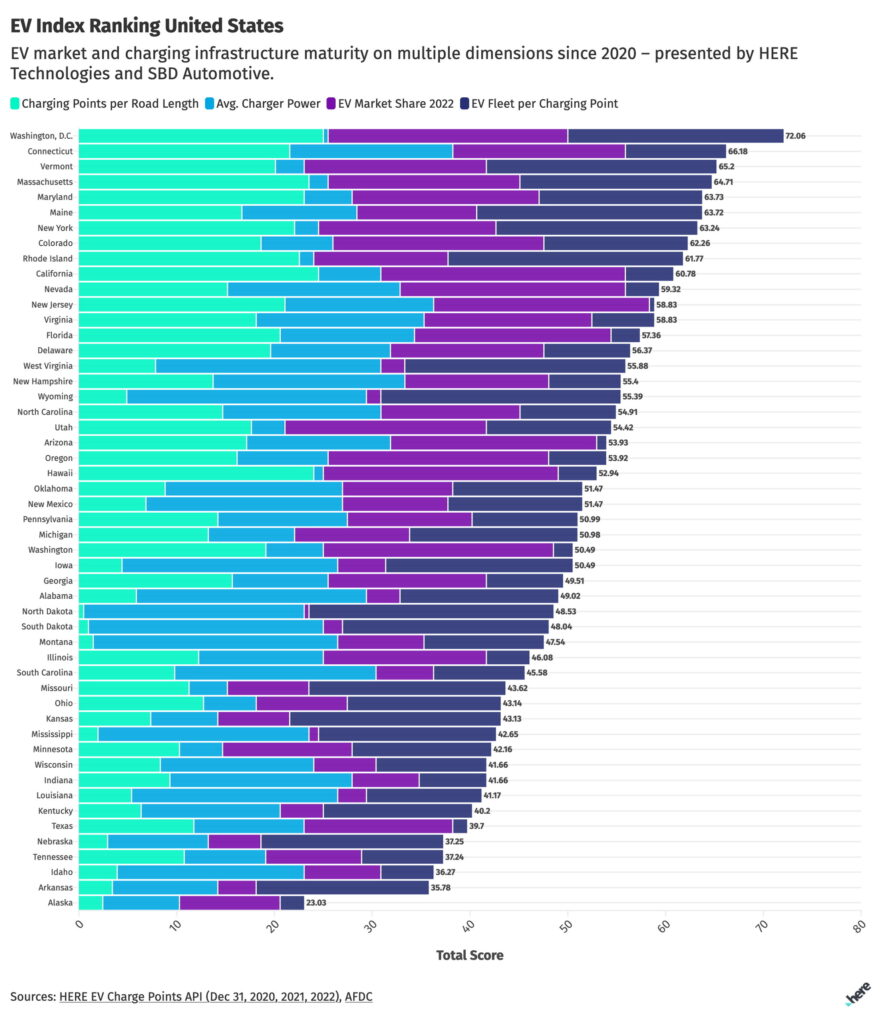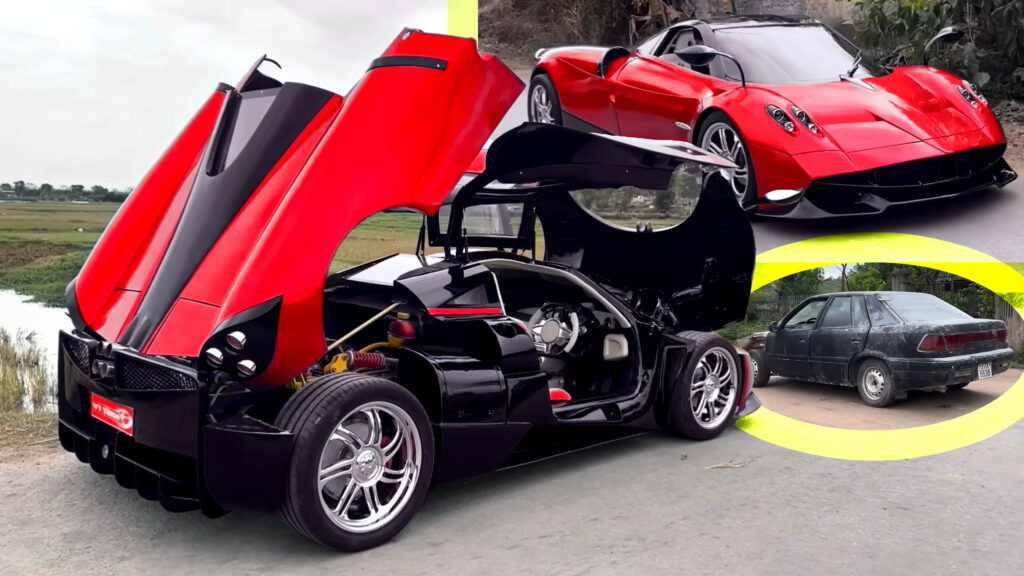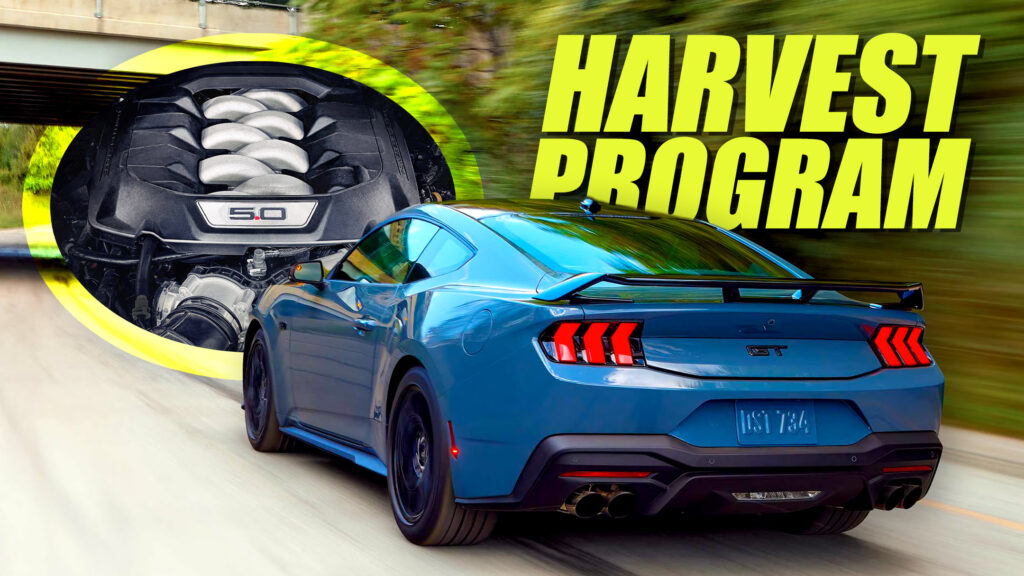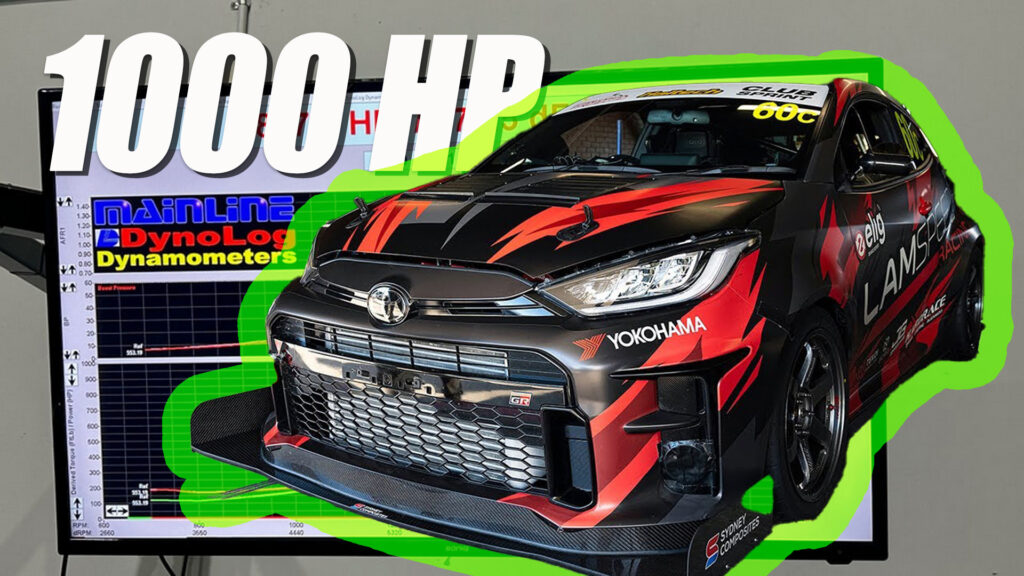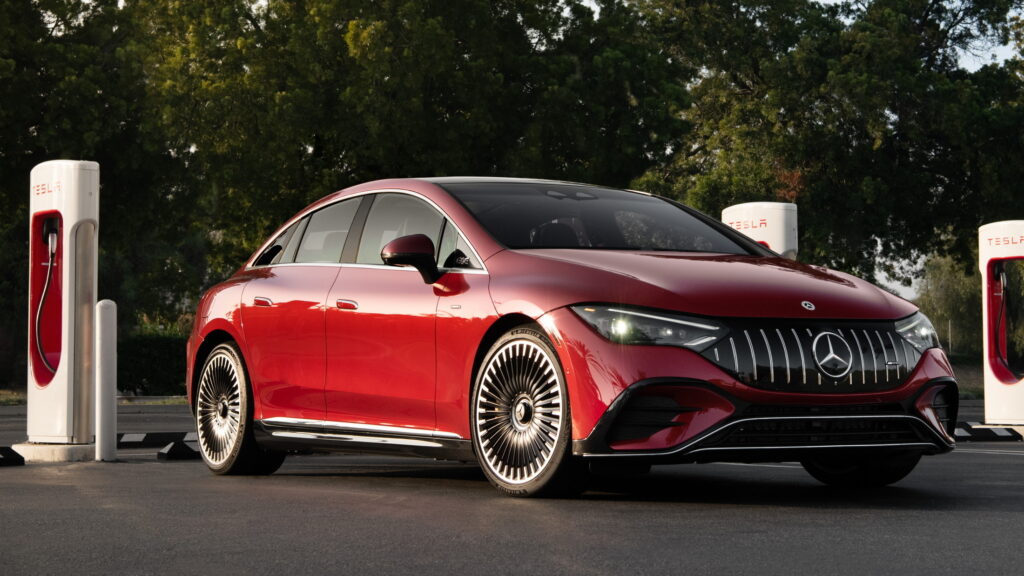If you were in charge of designing America’s EV infrastructure, your world could pretty much be divided into two factors: how many EVs are out there, and how many chargers are there to serve them? Get the ratio right, and you’ve got a happy population of drivers as well as healthy charging companies.
Just what is that happy ratio? According to new research from HERE and SBD, the average market should be looking to have one charging points for every eight to 12 electric vehicles on the road, but the real answer changes from state to state.
To figure out which states were serving their populations the most adequately, the organizations looked at four metrics and ranked each out of a score of 25. When they’re all added up, they get a score out of 100.
The study first looked at how far one has to drive to get a charge, a metric it came to by counting the number of chargers per length of road. Second, it looked at how quickly an EV can charge, which it determined by measuring the average capacity of available public charging points.
Read: Satisfaction With America’s Public EV Charging Network Hits New Low In 2023
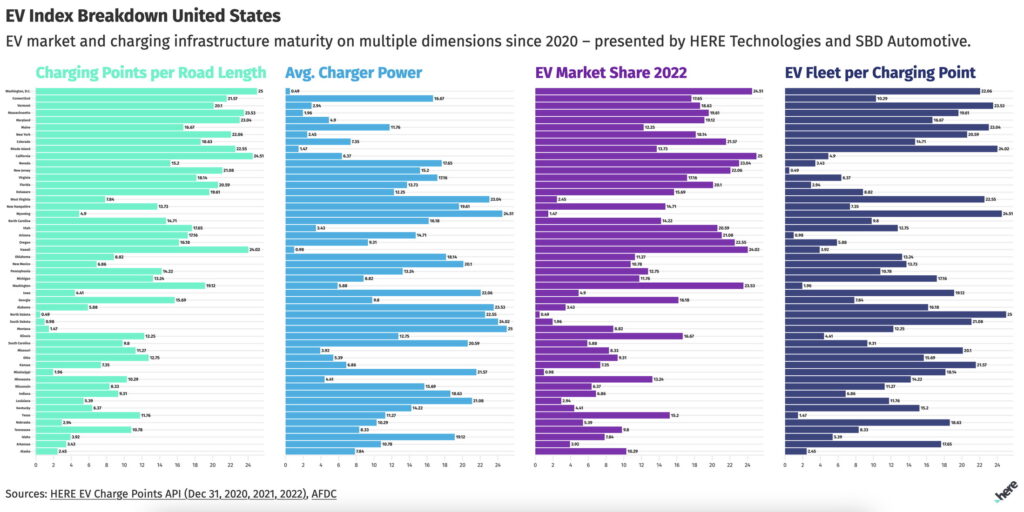
The third thing the researchers considered was the EV fleet share, which is to say the number of electric vehicles on the road, as compared to the number of internal combustion vehicles. Finally, it looked at how likely a driver was to find an unoccupied charger by comparing the ratio of registered EVs to the number of public chargers.
With all of that added, it found that Washington, D.C. is the part of the U.S. that best serves its drivers. Although it’s down on access to fast-chargers, it scored well in the other categories to get a total of 72.06 out of 100.
As for actual states, Connecticut was the leader with a score of 66.18, followed by Vermont (65.2), Massachusetts (64.71), and Maryland (63.73). Surprisingly, California was only the 10th-best-performing state, in terms of access to charger, no doubt hurt by its large size and high adoption rates.
Less surprisingly, the state that performed the worst was Alaska, with an overall score of 23.03. Arkansas (35.78) fared only mildly better, while Idaho (36.27), Tennessee (37.24), Nebraska (37.25), and Texas (38.7) round out the bottom five states, in terms of charger access.
While one doesn’t think of Tennessee or Texas as EV oriented, it is a little surprising that the states where the VW ID.4 and the Tesla Model Y are made provide their residents with such poor access to charging infrastructure.
“Electric vehicles are top of mind for consumers, governments and the auto industry all over the world. Stemming from the development of our EV Charge Point Predictions product, HERE and SBD have uncovered a growing discrepancy in the ratio of EV charge points to EV vehicles on the road,” said Chris Handley, VP of Dynamic Spatial Content at HERE Technologies. “Our analysis shows how much work needs to be done in order to usher in a fully electric mobility future.”
